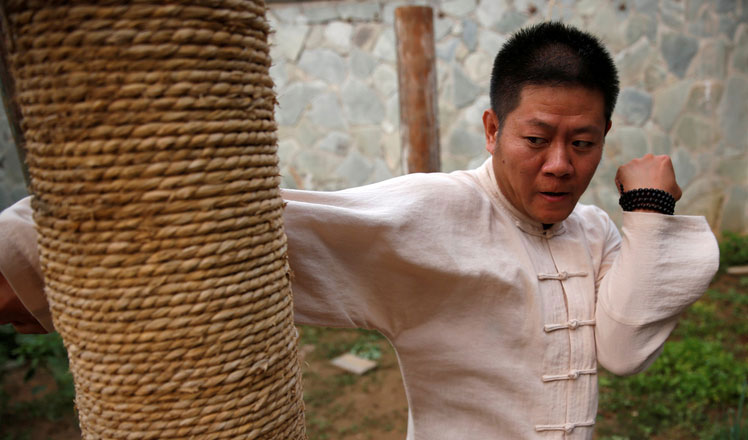Archeologists explain life in Southwest China 3,400 years ago
Updated: 2016-10-31 16:31
(Xinhua)
|
||||||||
People living 3,400 years ago in Southwest China's Yunnan province ate snails and lived in different houses in winter and summer, latest findings from a historical site showed.
The site in Xingyi village of Yuxi city was discovered in July 2015 during construction of a primary school. Houses, tombs, coffins, ash pits, roads, ditches, pottery, stoneware and bronzeware were all found there.
A Xinhua reporter saw piles of snail shells at the site. Zhu Zhonghua, an archaeologist with Yunnan cultural relics and archaeological research institute, said the snails were of two types.
"One was unique to lakes in Yunnan and they are hard to find today. The other is known to have been used by people in prehistoric times for food and decoration," he said.
"The amount of shells is quite large," he continued. "They have the top broken and there is a large amount of pots around. We concluded that the shells were discarded by humans after the snails inside were eaten."
Examination of bones found at the site revealed them to be 3,400 years old.
"Most of them were fishermen, living off snails, fish, crabs and clams," Zhu said. "They also grew rice, raised cattle and pigs, and hunted birds, deer and elephant. They lived in square houses in the summer and semi-subterranean dwellings in winter."
Excavation of the site is almost complete.
- A restaurant for food and relic lovers
- Horsehead-shaped relic a hit on the internet
- Cultural relic repair of Maiji Mountain Grottoes continues
- Couple devotes to cultural relic restoring
- A look of cultural relic repair team at Liaoning Provincial Museum
- Retroactive accountability needed for cultural relic protection
- Father and son express gratitude by traveling to 200 Chinese cities
- Wife raises funds to search for missing sailor
- Two-child policy working, birthrate figures show
- China promotes transfer of farmland use right
- Hefty award offered for deciphering oracle bone characters
- China Daily brings you 'sixth plenums' in past 35 years
- EU, Canada sign landmark deals to enhance economic, political partnership
- Wife raises funds to search for missing sailor
- Clinton's edge ebbs after FBI's announcement of new email review: poll
- Asia American leaders discuss civic engagement
- World's disabled get new champion
- Clinton, Michelle Obama make first joint campaign appearance

 The World in photos: from Oct 24 to Oct 30
The World in photos: from Oct 24 to Oct 30
 Through the lens: The life of a kung fu master
Through the lens: The life of a kung fu master
 In pics: Top 10 Chinese cities in 2016
In pics: Top 10 Chinese cities in 2016
 A sprinkling of snow in China's northern part
A sprinkling of snow in China's northern part
 In pics: School uniforms get chic look
In pics: School uniforms get chic look
 China-Russia Internet Media Forum opens in Guangzhou
China-Russia Internet Media Forum opens in Guangzhou
 2016 Comedy Wildlife Photography Awards Finalists
2016 Comedy Wildlife Photography Awards Finalists
 NINED VR creates splash with virtual reality products
NINED VR creates splash with virtual reality products
Most Viewed
Editor's Picks

|

|

|

|

|

|
Today's Top News
'Zero Hunger Run' held in Rome
Trump outlines anti-terror plan, proposing extreme vetting for immigrants
Phelps puts spotlight on cupping
US launches airstrikes against IS targets in Libya's Sirte
Ministry slams US-Korean THAAD deployment
Two police officers shot at protest in Dallas
Abe's blame game reveals his policies failing to get results
Ending wildlife trafficking must be policy priority in Asia
US Weekly

|

|







